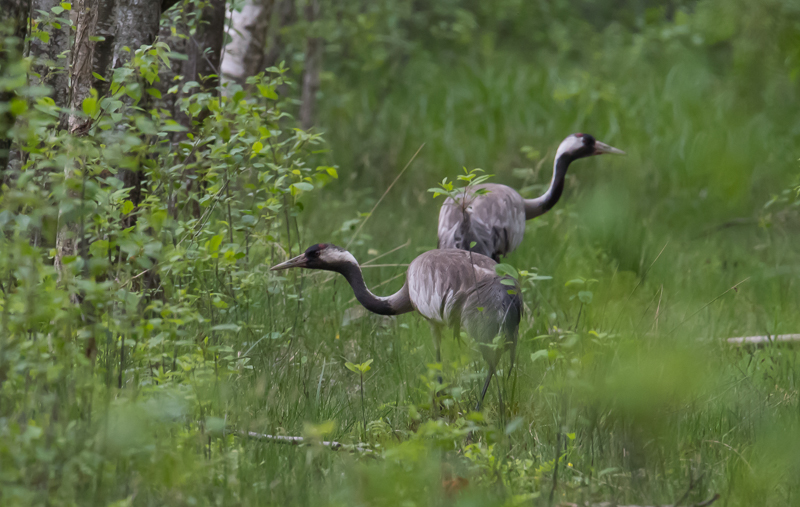Figures reveal 2022 was another successful year for the Common Crane – with numbers bouncing back since their UK extinction. The latest survey reveals a fantastic 71 pairs across UK in 2022, with the population estimated at well over 200 birds. Cranes are making a comeback thanks to restoration and protection of their habitats. However, proposed changes to UK legislation could result in the loss or the weakening of the laws that have supported the excellent conservation work done so far.
The Common Crane continues its comeback after the latest breeding survey reveals a fantastic 71 pairs across the UK in 2022. This is the second highest number since cranes returned in 1979 after becoming extinct in the 1500s.
Of these 71 pairs, up to 64 pairs bred and these fledged an incredible 39 chicks, significantly adding to the UK population. Cranes are slowly spreading across the UK with the first successful breeding along the Suffolk Coast. The total UK population is now believed to be over 200 birds.
Wild cranes were once widespread, before becoming extinct in Britain in the 16th century through hunting and the loss of their favoured wetland habitat. In 1979, a small number of wild birds returned to the UK before spreading to elsewhere in the UK, aided by the creation and improvement of their favoured habitat. The population was given a further boost when hand-reared cranes were released on the Somerset Levels and Moors.

Common Crane, copyright Andy Adcock, from the surfbirds galleries
Along with the reintroduction project, the concerted conservation effort of peatland restoration and wetland protection has significantly contributed to this recovery and nature reserves have played a vital role. Over 80% of the breeding population are found on protected sites, with 21 pairs on RSPB nature reserves alone.
However, the UK Government’s controversial Retained EU Law (Revocation and Reform) Bill, risks not only vital environmental regulations, but creates a hugely time consuming and distracting process, potentially delaying delivery of government commitments.
Many wetland sites across the UK are afforded the highest level of legal protection for nature. However, under the Retained EU Law Bill, Ministers would be given the power to weaken or to remove these laws, leaving these and many other of the very best places for nature across the UK far more vulnerable to harm.
Damon Bridge, Chair of the UK Crane Working Group said: “Much of the UK’s best wetland habitats are protected areas and provide sites for cranes to nest safely. The crane population is growing and our wetlands are important refuges for many other specialist wetland species. We now need to expand and connect up larger areas of wetland across the UK. Wetlands help lock carbon away, reducing green house gas emissions, and can also help to reduce flood risk to homes and communities as well as being wonderful areas for wildlife. We must continue to protect them.”
Andrew Stanbury, RSPB Conservation Scientist said: “The UK Government has made amibitious commitments to halt the decline in the abundance of species, and to protect 30% of our land and sea by 2030. It must now choose to strengthen, not dismantle, the laws for protected areas that are critical to the continued success of Common Crane and many other iconic wetland species.”
Matthew Capper from Lincolnshire Wildlife Trust added: “2022 marked the third year that cranes have successfully bred in Lincolnshire, reflecting the ongoing national spread of the species and the hard work by a number of conservation organisations to provide suitable sites for them. We are incredibly proud to be a playing a part in their recovery but this would be hugely undermined if the laws that protect these wetland sites were weakened or removed.”
Standing at a height of 4ft, the UK’s tallest bird is also known for its graceful mating dance. When a pair comes together to start the breeding season, they reinforce their bond with an energetic dance of head bobbing, bows and pirouettes.
Cranes are naturally secretive during this period and can be difficult to spot, however they can be seen more easily at other times of year on a number of RSPB nature reserves including West Sedgemoor, Lakenheath Fen, Nene Washes and Loch of Strathbeg, and the Lincolnshire Wildlife Trust’s Willow Tree Fen nature reserve.
February 2nd marks World Wetlands Day, and this positive news shows that conservation action can make a real difference.